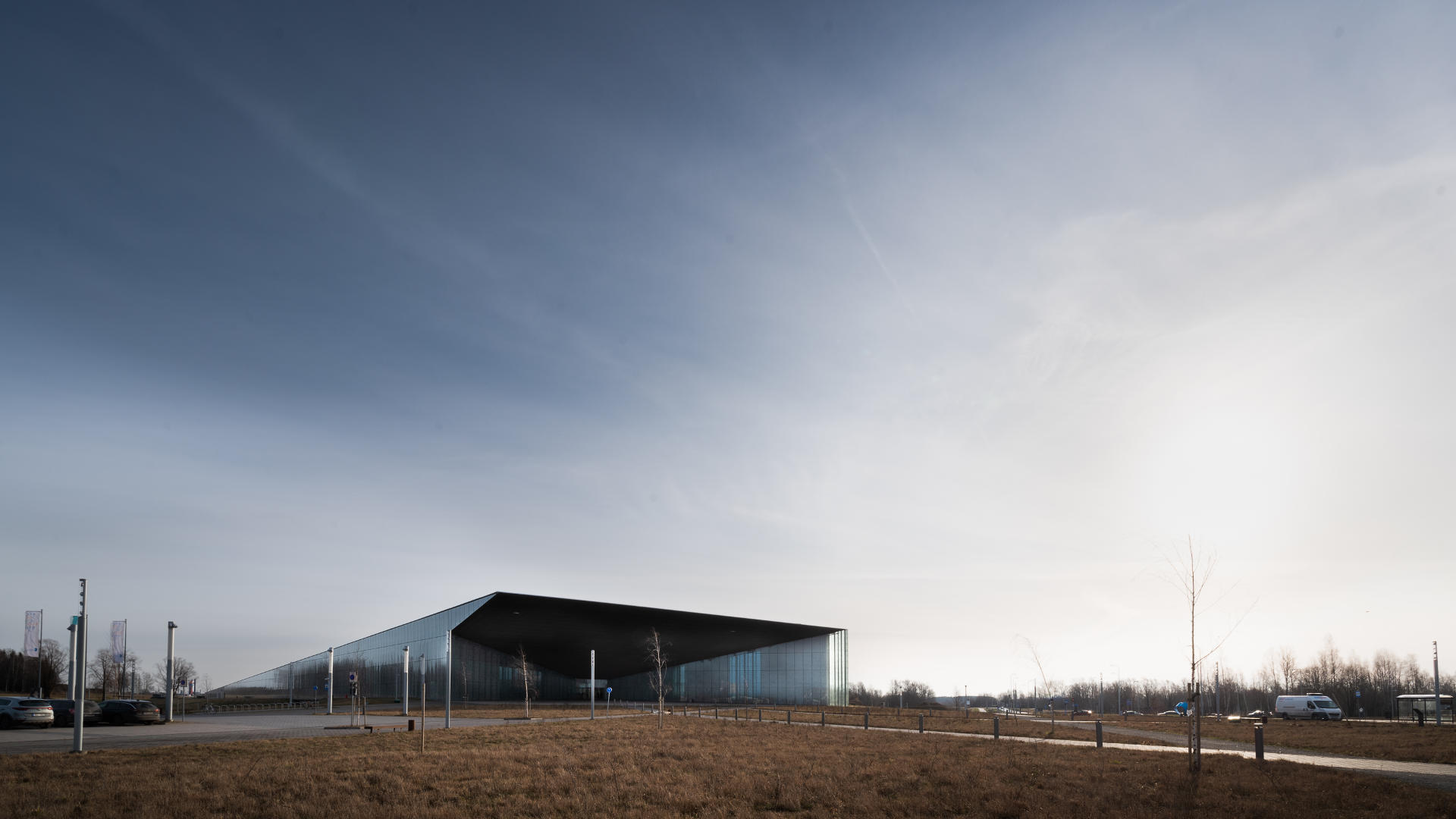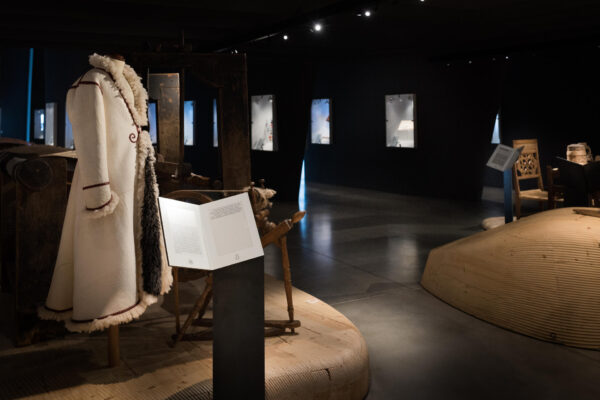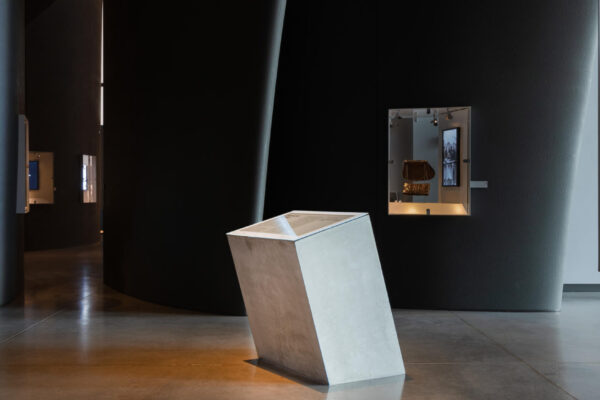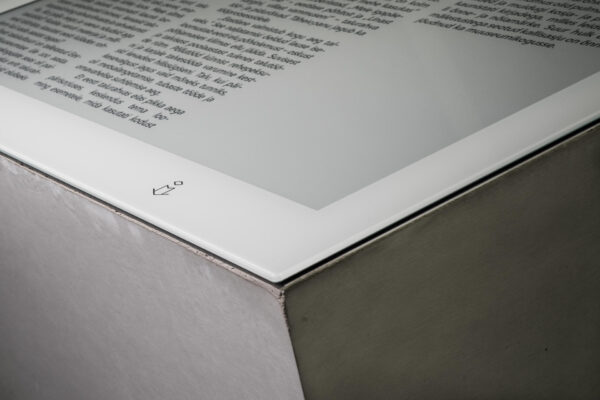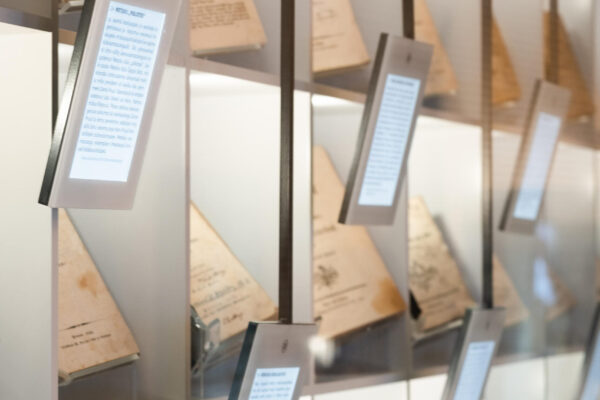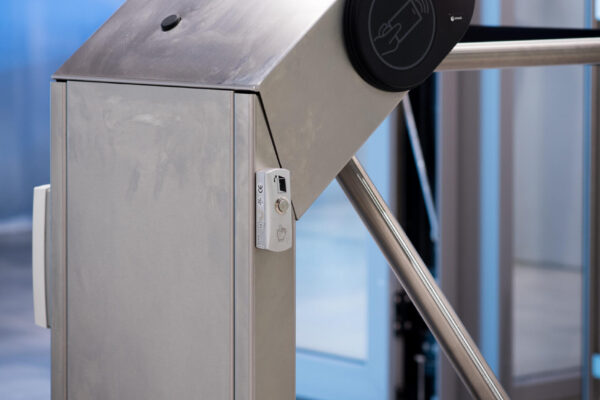PORTFOLIO
E Ink Displays for Museums, Galleries, and Exhibitions
Low-power E Ink display devices with a content management system designed for multilingual exhibitions and wayfinding in museums and galleries, making it possible to provide personalized information to the visitors in their chosen language.
Technologies
- 6.8″, 9.7″, 32″ E Ink
- Power over Ethernet
- RFID/NFC
- ISO14443, ISO15693
- C/C++/Java Languages
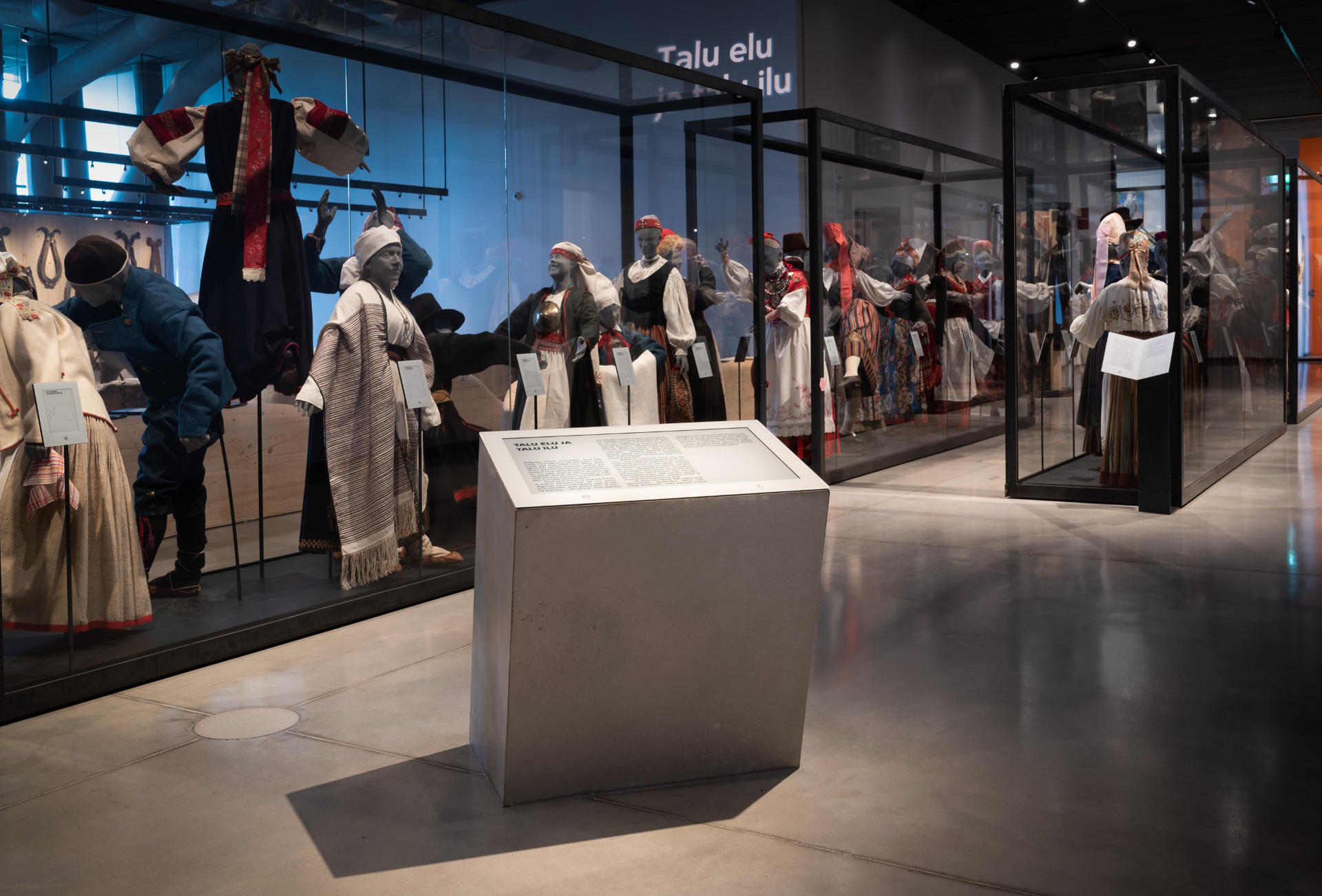
Challenge
There are over 100,000 museums and galleries worldwide, attracting visitors from diverse linguistic backgrounds. Despite this global reach, most museums display exhibit information primarily in their local language, occasionally accompanied by one additional translation. These descriptions are often presented using static materials – such as printed cardboard, etched metal, or glass panels – which are costly and inflexible to update once installed.
Cultural institutions are increasingly seeking solutions that provide multilingual, dynamic content while maintaining a minimalist aesthetic that blends into the surrounding environment of the exhibit. The goal is to reduce visual clutter and ensure that visitors remain focused on the artifacts themselves.
While LCD screens may seem like a viable option for digital content delivery, their bright light emission and high power consumption make them unsuitable for sustainable, museum-grade displays. A new approach is needed – one that delivers digital flexibility with the subtlety and energy efficiency required in these curated spaces.
Solution
The Estonian National Museum in Tartu has chosen ePaper signs featuring E Ink displays for its multilingual museum signage, which provides information about the exhibits as well as the Estonian history and culture in several languages. E Ink displays were selected, because they blend into the surroundings with their natural tone and sleek design, therefore, reducing visual noise and keeping the attention of the visitors on the exhibits themselves. Furthermore, the low power consumption, wired data connections and batteryless installation of the devices ensure that the EMC and heat dissipation are kept at a minimum, which is crucial to the preservation of the exhibits.
The museum uses the ePaper digital signage platform developed and installed by Artec Design, making it possible to provide personalized information to the visitors, hence increasing engagement and improving the visitor experience.
Visitors will receive a ticket that contains an RFID chip (ISO15693/NFC-5). The ticket is used to enter the exhibition via a turnstile and to read information from the ePaper devices in their preferred language, whether it is Estonian, English, Finnish, Latvian, Ukrainian, German or French. All of this becomes available to the visitors by a simple action – presenting the ticket to the turnstile or an ePaper device. The key highlights of the installation are the following:
- The museum is covered by 867 E Ink displays with several diagonal sizes – 32 inches, 9.7 inches, and 6.8 inches.
- The exhibit information is shown in a multitude of languages – Estonian, English, German, Ukrainian, Latvian, Finnish, French.
- The language is changed by an NFC/RFID ticket – Icode SLIX (NFC Type 5 and ISO 15693 compliant).
- The ePaper signs feature a single cable for both data and power – Power over Ethernet (PoE).
The museum features more than 6000 square meters of exhibition space with more than 850 ePaper displays installed, therefore, Power over Ethernet (PoE) was chosen for both data and power instead of using wireless communication or batteries. This was a crucial design consideration, as this made it possible to increase the reliability of the system while keeping the required maintenance at a minimum – both of which are critical for a large installation. The installation is comprised of the following components:
- 413x 6.8-inch ePaper display devices.
- 217x 9.7-inch ePaper display devices.
- 20x 6.8-inch ePaper display devices.
- 135x Power over Ethernet (PoE) network switches.
- 120x USB RFID readers for content changes on LCD monitors.
- 5x access control devices for museum entrance turnstiles.
- 1x content management system (CMS), which makes it possible to manage and configure all displays via a single Web interface.
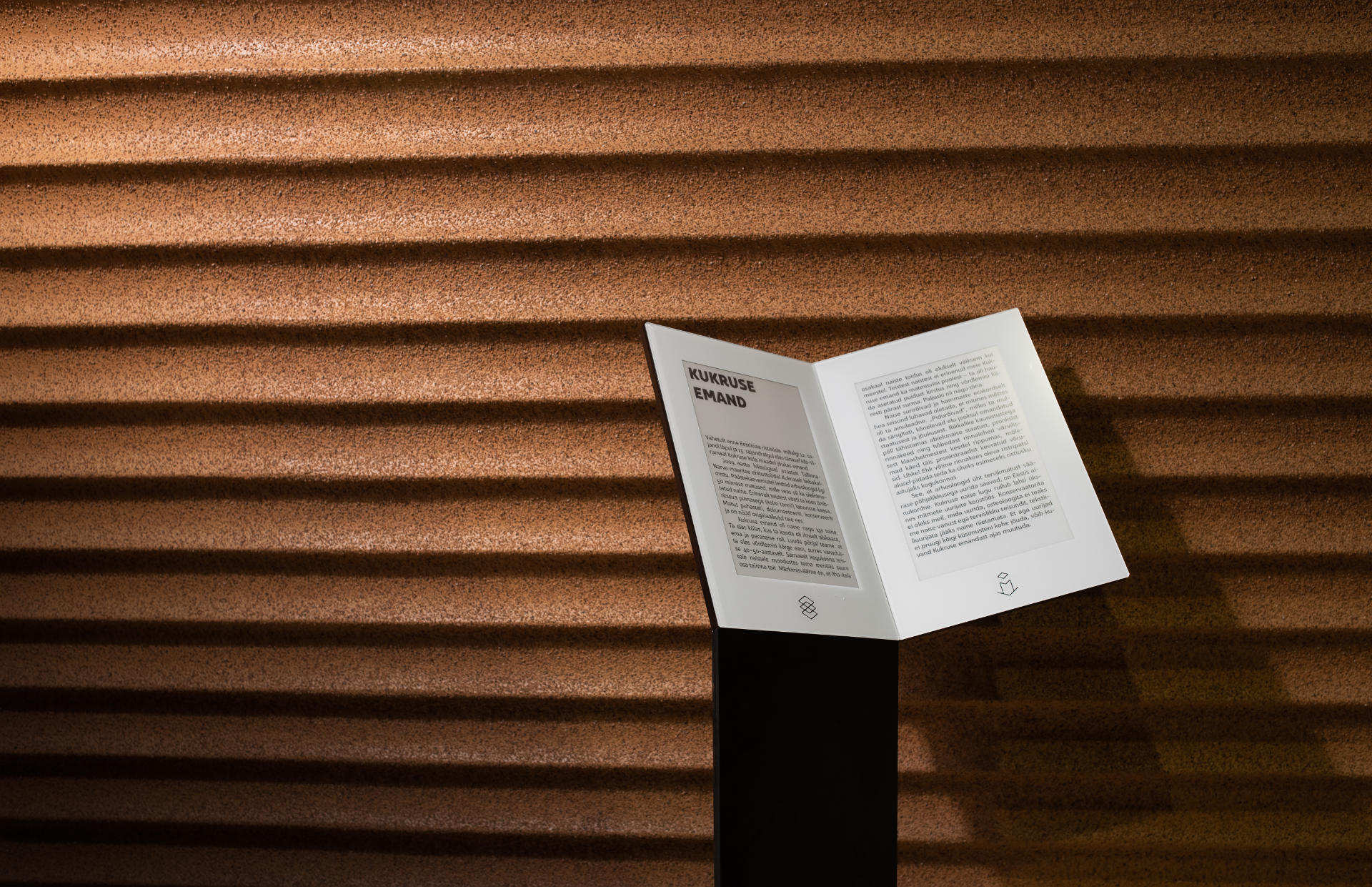
Specifications
Features
6.8-inch, 9.7-inch, 32-inch E Ink Karta displays, NFC/RFID for content changes, Ethernet connectivity, remote management console
Software Platform
C programming on a bare-metal microcontroller; C++/Java/Javascript programming on server side software.
Power & Connectivity
Wired Power over Ethernet
Interfaces
RMII, SPI, I2C, UART/USART, SDIO, ADC, GPIO, PWM
Impact
The multilingual exhibition at the Estonian National Museum has been a remarkable success. Since 2016, over 850 ePaper displays have operated flawlessly, serving hundreds of thousands of visitors. These displays enable an interactive museum experience, allowing guests to engage with exhibits and access content in their preferred languages.
Building on this expertise, TintTech – a spin-off affiliate company of Artec Design – has developed next-generation ePaper display solutions that have been delivered to other leading museums, including the Heureka Science Centre in Helsinki, Finland, and the National Museum in Krakow, Poland. Learn more about TintTech in the next section.
Read more about this project through media coverage by:
- RFID Journal: “Estonian National Museum Deploys RFID-Controlled Informational Signage”.
- Digital Signage Today: “Estonian National Museum deploys informational signage with RFID tech”.
- Display Daily: “E Ink Finds a Niche in, well… WayFinding”.
- Sixteen:Nine: “E Ink Displays And RFID Cards Guide, Educate Visitors At Estonian National Museum”.
- AVNetwork Digital Signage: “E Ink’s ePaper Signage Solutions Enhance the Learning Experience”.
”This is one of the first large-scale commercial deployments of E Ink’s signage in museums. It is a testament to the unique value proposition of E Ink’s display technology which can enable digital updates without taking any focus away from the artwork.
Harit DoshiHead of Signage Business at E Ink Corporation
About TintTech
TintTech – a spin-off affiliate company of Artec Design – designs, produces and services energy-efficient ePaper digital signage products with related software and accessories. Their products are tailored for offices, universities, hospitals, museums, and other organizations that value sustainability and minimalist design aesthetics.
TintTech’s ePaper signage product range features 7.8-inch, 9.7-inch, 13.3-inch, and 32-inch E Ink displays, available with both Power over Ethernet (PoE) for wired installations and Cat M/NB-IoT for wireless connectivity. These display solutions can be easily managed through on-site or cloud-based content management systems (CMS).
Designed for both indoor and outdoor environments, TintTech displays are ideal for applications such as meeting room signage and scheduling, wayfinding, institutional communication, lecture schedules, medical information, and public transit information – serving as smart signage for bus stops, city notifications, and more.
TintTech’s products are designed and assembled in Europe, combining advanced Western engineering with the elegance of Nordic design. Headquartered in Tallinn, Estonia, Tint Technologies serves clients across the globe – from Europe to Northern America, and Asia.
Contact TintTech for product and pricing inquiries as well as for further details.
About the Estonian National Museum
The Estonian National Museum was founded in 1909 on the initiative and with the support of the nation. Its main task was to protect and maintain the history and culture of Estonia.
Echoing the sentiments shared across many European countries, the museum’s early years were dedicated to the preservation of the vanishing peasant culture and the meticulous curation of artifacts essential to understanding Estonia’s cultural evolution. As the cultural landscape evolved, so too did the museum’s focus, pivoting towards the celebration and exploration of folk culture.
Until the difficult times of World War II, the Estonian National Museum served as the custodian of all facets of the nation’s heritage. Furthermore, it earned recognition as a revered institution of memory by the 1930s. Its esteemed status was further elevated through fruitful collaborations and exchanges with foreign nations, fostering a vibrant cultural dialogue that transcended borders.
Today, the museum continues to uphold its legacy of continuity and tradition, serving as a catalyst for cultural dialogue that bridges the chasm between the past and the future. As a modern cultural and tourist center, the Estonian National Museum invites every Estonian and visitor to take part in the nation’s unique cultural history.
